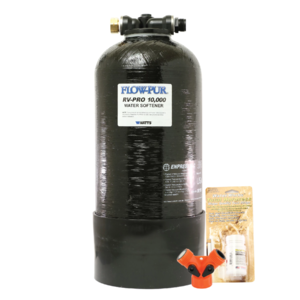Neal
Administrator
- Joined
- Jul 27, 2019
- Messages
- 13,916
- Location
- Midlothian, VA
- RV Year
- 2017
- RV Make
- Newmar
- RV Model
- Ventana 4037
- RV Length
- 40' 10"
- Chassis
- Freightliner XCR
- Engine
- Cummins 400 HP
- TOW/TOAD
- 2017 Chevy Colorado
- Fulltimer
- No
I'm late to this game and finally got on board with the water softener two years into my RVing experience. I bought one knowing I would be traveling to the great south west for the winter but got caught off guard on an east coast location in Cape Charles, VA with hard water. I use this all the time now and it's no hassle. Regen is simple per the YouTube video below done by simply adding salt. After the regen is complete you do not taste or smell salt, some chemist knows what they are doing! I have heard to try to keep it out of the sun and of course like your city water connection stow it at night if going below freezing temps. Works great, shower glass remains clean but it is not something to use for RV washing as that's what DI rinse is for, this is not DI rinse.
https://www.amazon.com/gp/product/B00KVPNVJ6/?tag=rvf01-20

https://www.amazon.com/gp/product/B00KVPNVJ6/?tag=rvf01-20












